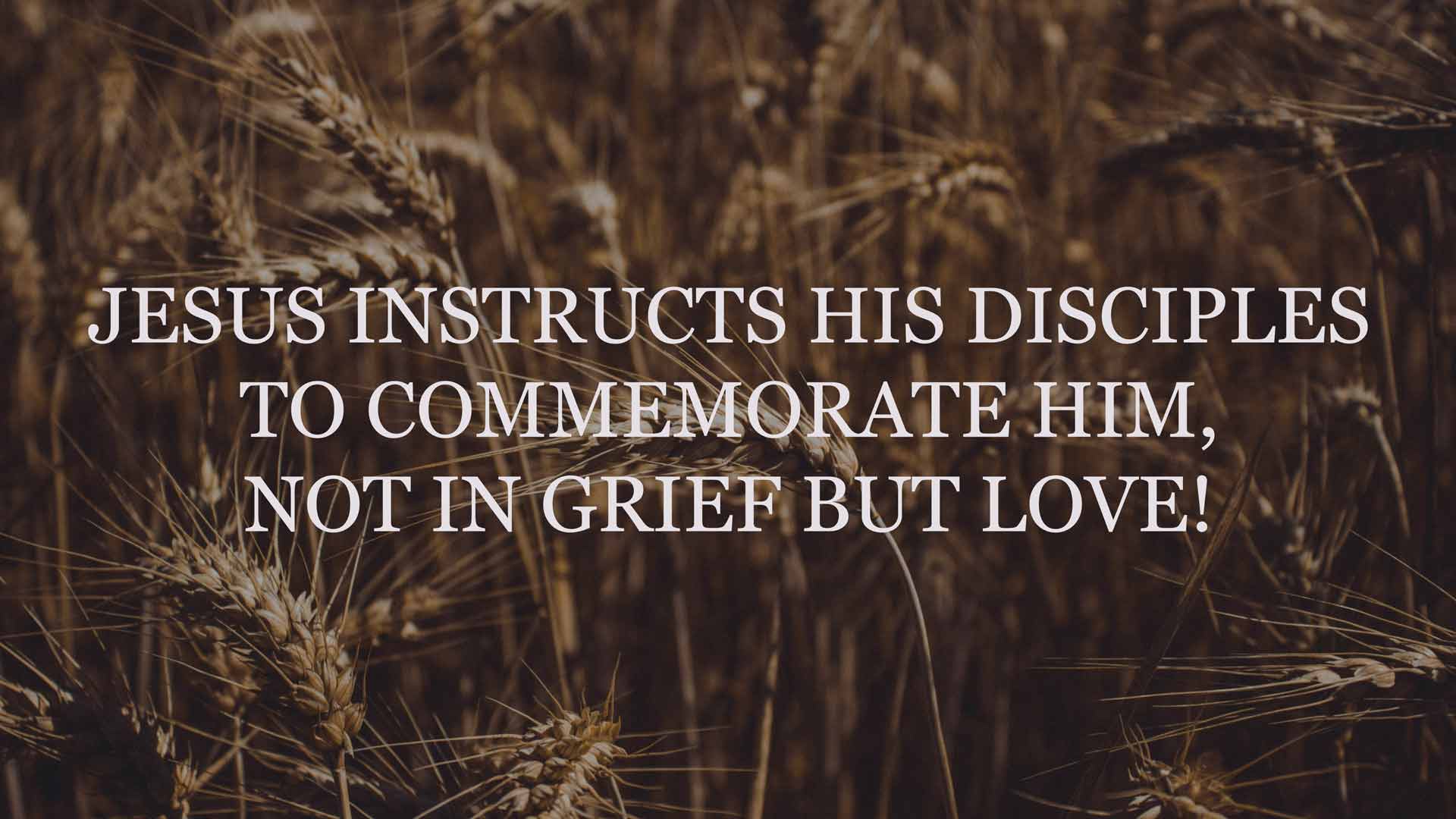An Invitation to Communion

For nearly two millennia, followers of Jesus have gathered to partake in communal meals. In various times and traditions, these meals took different names and forms such as Love Feasts, Holy Communion, or The Lord’s Supper. At their core, all of these originate in a singular event in Jesus’ ministry—the Last Supper.
In the Gospel of Luke, we find Jesus seizing the moment of his final meal to prepare his disciples for the impending events. He broke the bread to show how his body would soon also be broken.
When the hour had come, He reclined at the table, and the apostles with Him. And He said to them, “I have earnestly desired to eat this Passover with you before I suffer; for I say to you, I shall never again eat it until it is fulfilled in the kingdom of God.” And when He had taken a cup and given thanks, He said, “Take this and share it among yourselves; for I say to you, I will not drink of the fruit of the vine from now on until the kingdom of God comes.” And when He had taken some bread and given thanks, He broke it and gave it to them, saying, “This is My body which is given for you; do this in remembrance of Me.” (Luke 22: 14 -19 NASB1995)
Likewise, as he raised the cup, the dark red hue of the wine served to illustrate a deeper significance.
And in the same way, He took the cup after they had eaten, saying, “This cup which is poured out for you is the new covenant in My blood. (Luke 22: 20).
Instituting the old covenant, Moses took the blood of a freshly slain lamb and threw it on his people (Exodus 24:8); it symbolized the forgiveness of sins. Now, Jesus establishes a new covenant, offering his blood for the final and ever-lasting forgiveness.
The command, “Do this in remembrance of me,” resonates profoundly. When ancient Israelites grieved, they covered themselves in ashes and tore their clothing. Yet, during the Last Supper, Jesus taught his followers a new mode of remembrance. How can one grieve after death itself has died? Jesus instructs his disciples to commemorate him, not in grief but love! And so, by repeating this communal meal, each time recalling the perfect sacrifice made on our behalf, we remember him just as he asked of us.

Throughout the Gospel of Luke, food is a carefully treated motif. Each meal in which Jesus participates is used as an opportunity for a lesson in theology. The last supper is the seventh meal described in his Gospel. In the symbolic language of the Bible, seven always denotes completion and perfection. So, Luke uses the number to mark the completion of Jesus’ perfect ministry.
How surprising is it, then, that Luke writes about not seven but eight occasions when Jesus eats? Jesus’ final meal was not his final meal, and we can read about him eating one more time, post-resurrection, as he meets two of his followers on the road to Emmaus (Luke 24:13- 35). If seven is the number of completion, one the number of creation, then eight has got to denote new creation.
And so, we must also remember that if we follow Jesus, we follow him to death and to resurrection. Our final meal on earth shall not be our final meal, but we will eat again in New Heaven and New Earth, during the marriage supper of the Lamb, as described in the book of Revelation (Rev. 19:6-9). Therefore, as we prayerfully approach the bread and the cup, let us gaze both backward and forward. Let us remember our Savior who gave up his body to be broken and his blood to be poured as a payment for our sins. And let’s also look to the future after death, where we will eat in the full presence of our God yet again.
Communion today—rooted in the Last Supper—reminds us of Jesus’ sacrificial love and the establishment of the new covenant. We partake of it in memory of him and anticipation of the future, eagerly awaiting eternal communion with our Savior in New Jerusalem.
